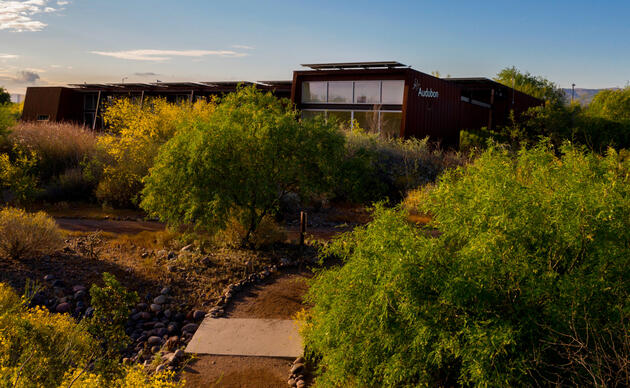In the face of climate change, persistent drought, and over-allocation, New Mexico’s rivers, including the Gila River and the Rio Grande, are experiencing record low flows. As you read this story, 78% of New Mexico is in severe or extreme drought status, our rivers are facing historic low snowpack levels and the annual life-renewing spring peak flood will not materialize. Many once free flowing rivers, including the Middle Rio Grande, are expected to see unprecedented miles of a dry river bed this summer. Communities are bracing themselves for a year of diminished water for people and wildlife. Low river levels are the top concern for over 80% of western voters. Our rivers and all they support are at risk.
As we brace for a record breaking dry summer, we are visibly reminded that water is the source of all life in the West and here in New Mexico. At Audubon, we know how critical our rivers are for bird habitat and biodiversity. Central to Audubon’s conservation work is the belief that where birds thrive, people prosper. Our work is centered on birds because they are a crucial link in the chain of life. The vast distances birds travel and their exposure to diverse ecosystems make them unique barometers of the earth’s health and specifically, here in New Mexico, the health of our rivers and wetlands.
Many birds depend on healthy rivers, streams and springs, such as the Southwestern Willow Flycatcher, Yellow-billed Cuckoo and Bell’s Vireo, which are all in decline because of a changing climate, over allocation of water resources, and other changes to a rivers’ natural flow. To that end, Audubon remains steadfast in finding a solution to these climate change challenges and protecting our natural resources that are precious ribbons of life for birds and people.
Audubon’s Solution
In order to make meaningful change in water and land use in the West, particularly in New Mexico, in the face of climate change, Audubon must use a multi-faceted approach to innovative water conservation solutions that provide long-term water for communities and wildlife.
Audubon is the leader in the state on innovative programs to restore nature’s share of water. In partnership with irrigation districts, tribal nations, municipalities and senior water users, Audubon has implemented first-of-its-kind voluntary water transfers and modernized water policies to restore vibrant ribbons of river habitat benefiting more than one hundred miles along the Rio Grande and its tributaries. Combined with transforming habitat along the river through volunteer-based restoration projects, we seek to address key water-related challenges by advancing balanced solutions to water use in New Mexico securing a greater share of water for birds, other wildlife, and the people and communities that depend on them.
The core of our success in New Mexico rests on our ability to bring creative scientific expertise to forums on water use, infrastructure, and land practice with local communities. It is through these discussions that innovative solutions can be found to address key water-related challenges by advancing balanced solutions to water use in the West, to ensure birds, ecosystems, people and economies thrive. This means examining all options to allocate water to meet economic and human health needs, while securing environmental flows to sustain key ecological riparian and wetland assets.
The Gila River
Protecting water for our state’s beleaguered rivers is one goal of Audubon New Mexico’s statewide Freshwater Conservation program, including advocating to save the last free-flowing Gila River from one or more diversions.
More than two-thirds of New Mexico bird species have been recorded using the Gila River Valley in New Mexico. The riparian forest, wetland, and open water habitat sustained by the Gila’s natural undulating flows provide vital food, water, shelter, and nesting substrate for Common Black-Hawk and Bell’s Vireo to name just two of the species of conservation concern that abound along the river.
Over the years, Audubon has witnessed generations of birds breeding and migrating along the Gila River and its tributaries and has worked tirelessly to protect 6,700 acres of Important Bird Areas and over 250 miles of free-flowing freshwater—this ribbon of life for those birds.
Located in the river valley supporting the highest density of breeding diurnal birds recorded for non-colonial birds in North America, the proposed diversions could be catastrophic to Important Bird Areas, the river’s health and the unique free-flowing river which many New Mexican families draw inspiration from while camping, hiking or birdwatching. Fortunately, there is a better solution. Next month, the Southwestern New Mexico Audubon Society and Audubon New Mexico, in partnership with Western Resources Advocates, will release a water alternative report detailing shovel-ready local water conservation and efficiency projects. This water alternative outlines how the Southwest region’s largest urban population could secure their future water needs beyond 2060 and save ratepayers and taxpayers tens of millions in capital improvement costs while protecting New Mexico’s last free-flowing river.
Stay tuned in May for this release.





